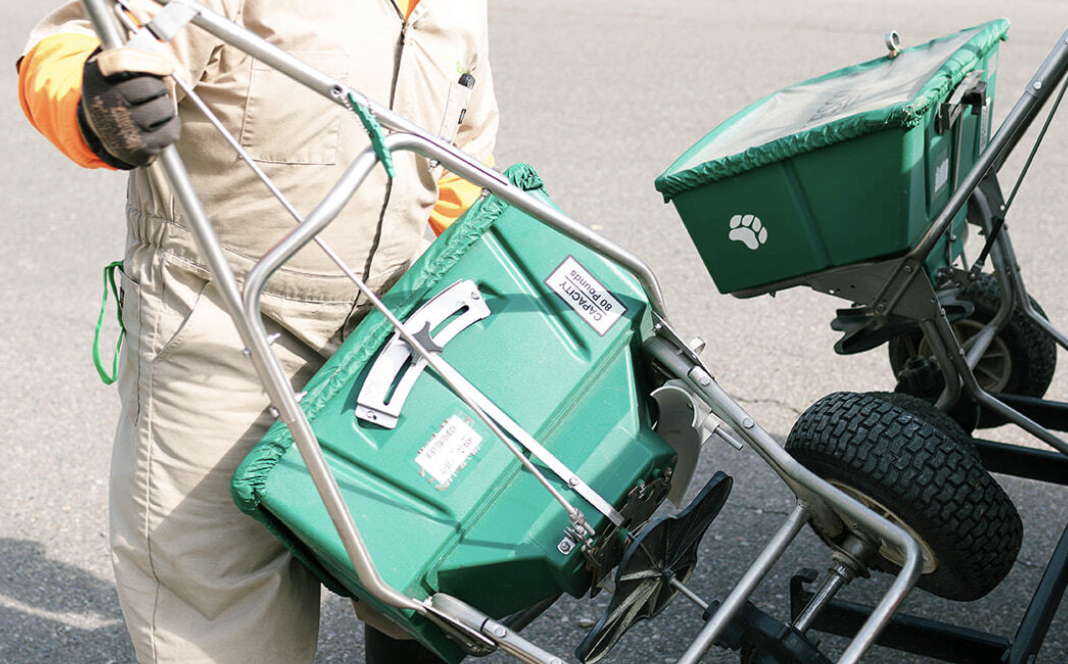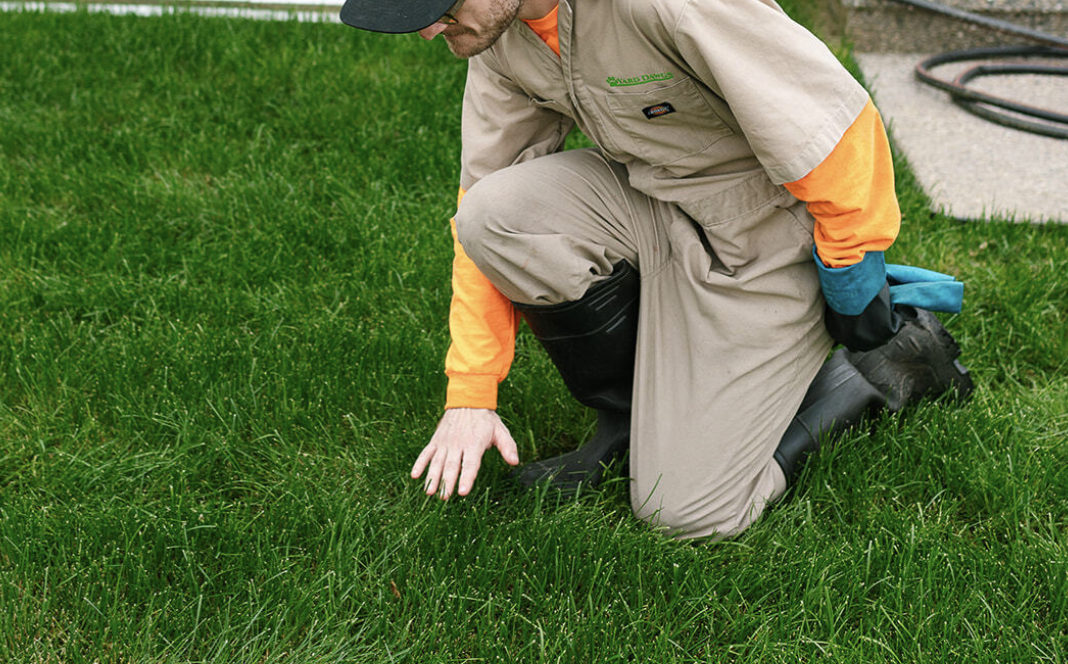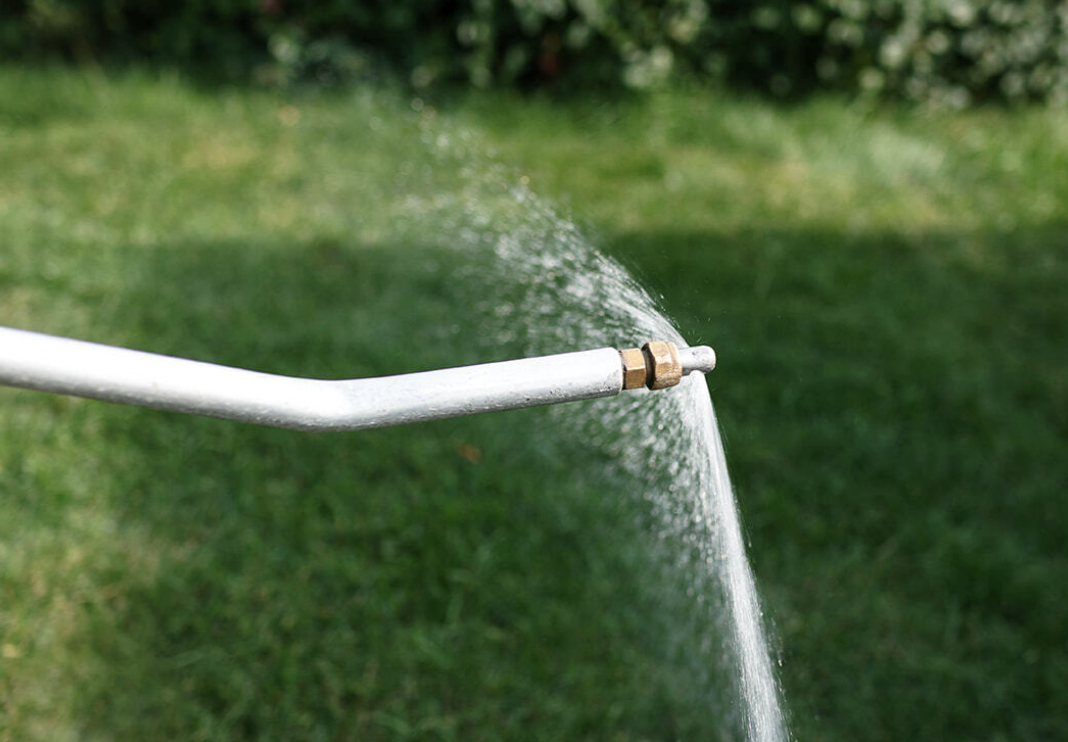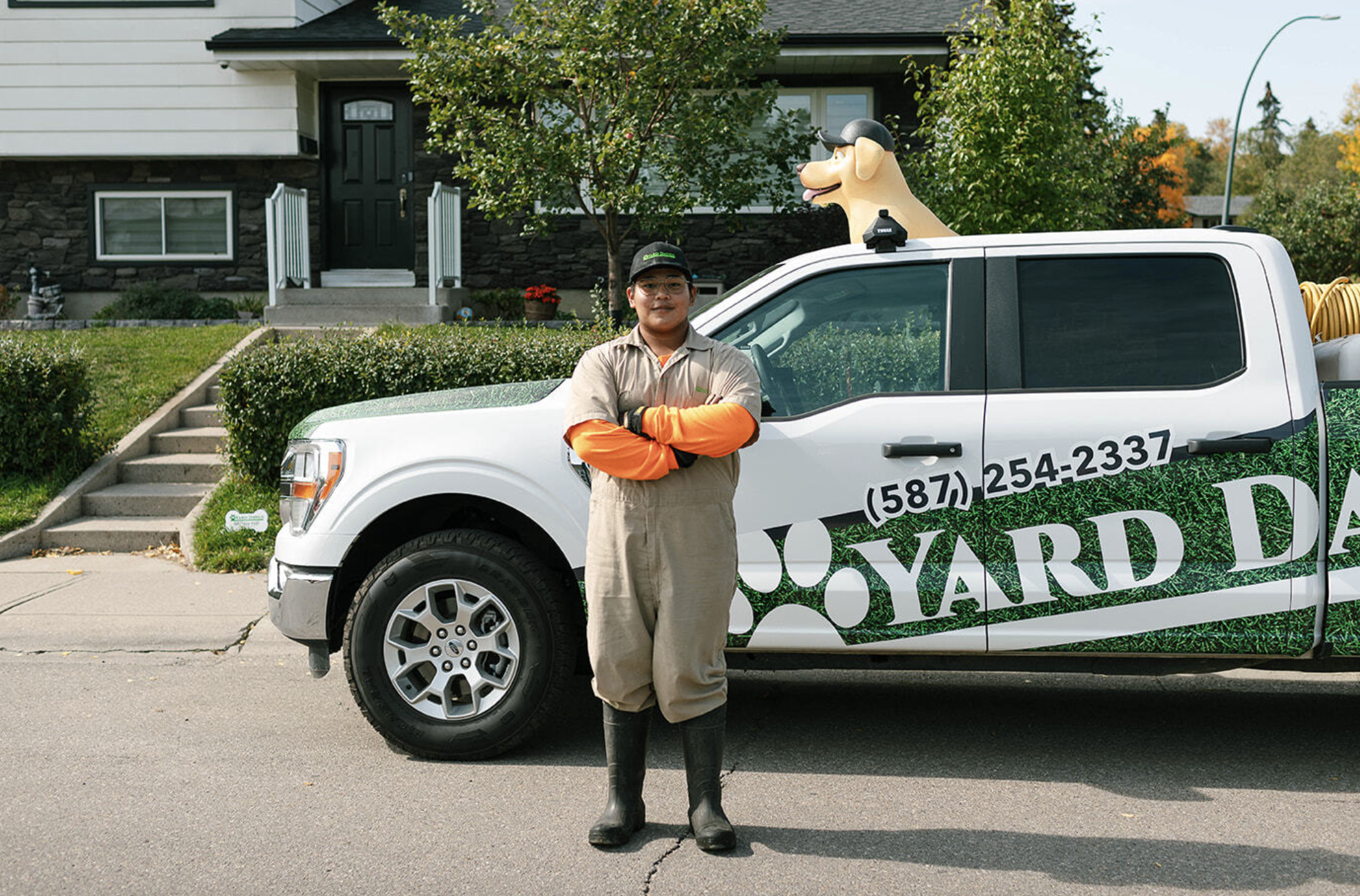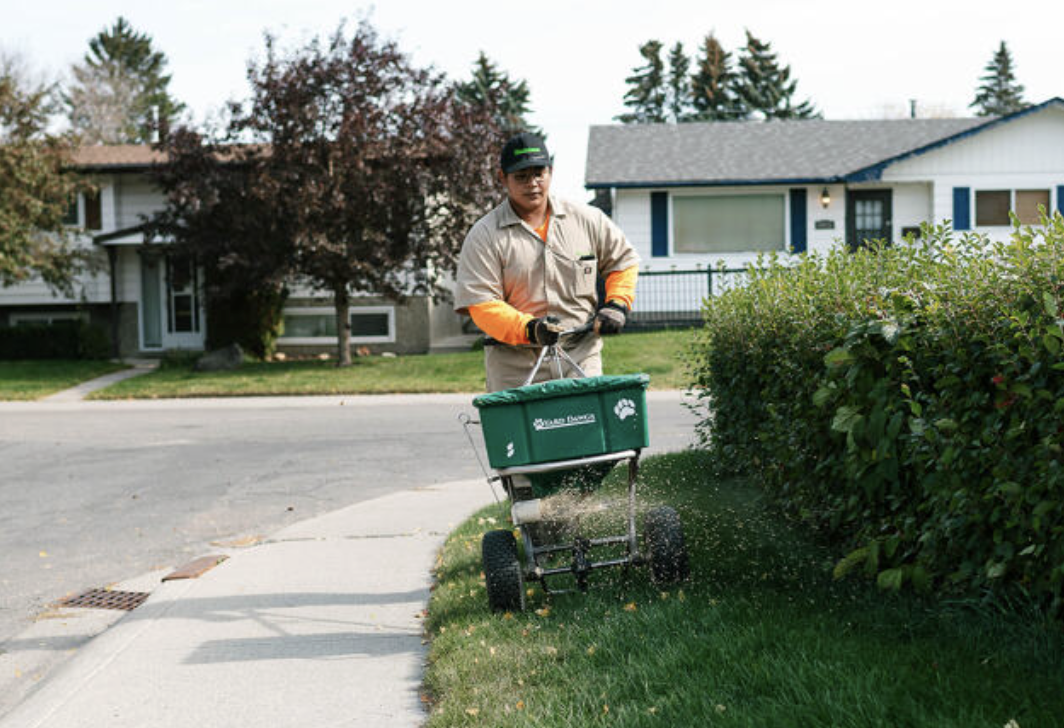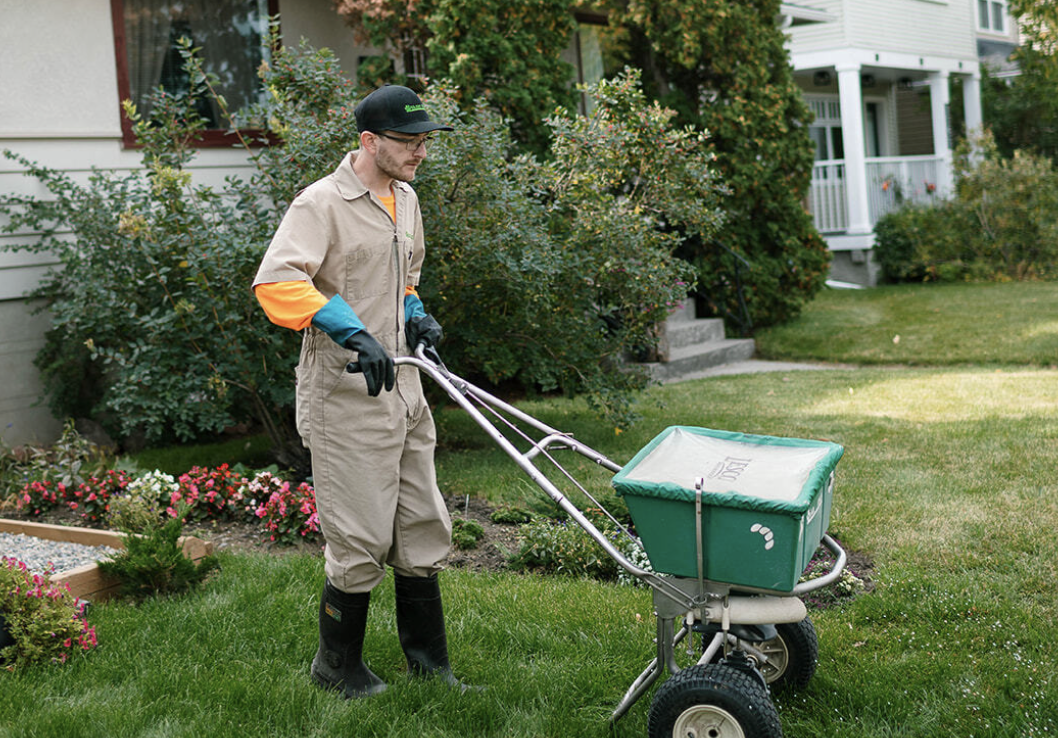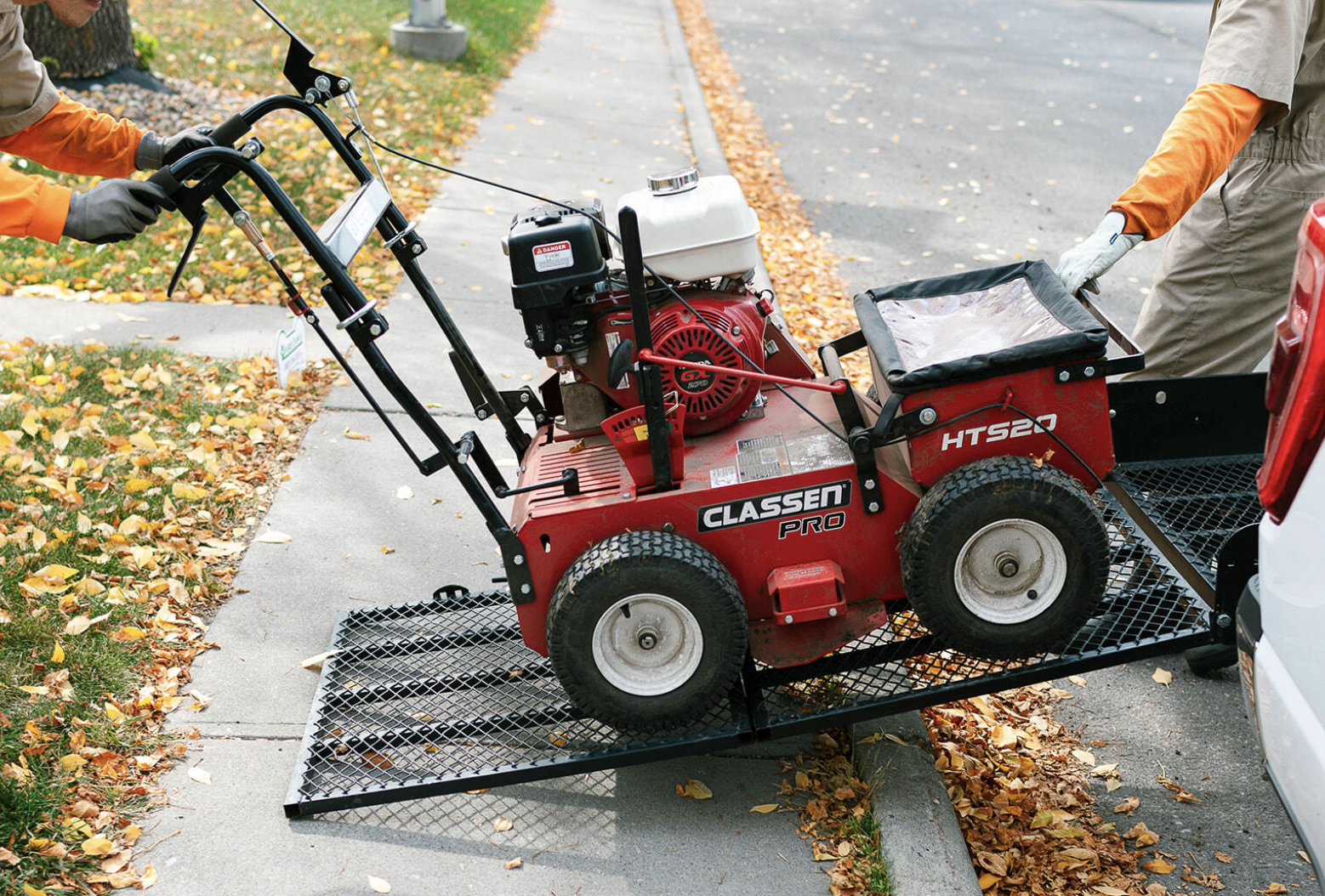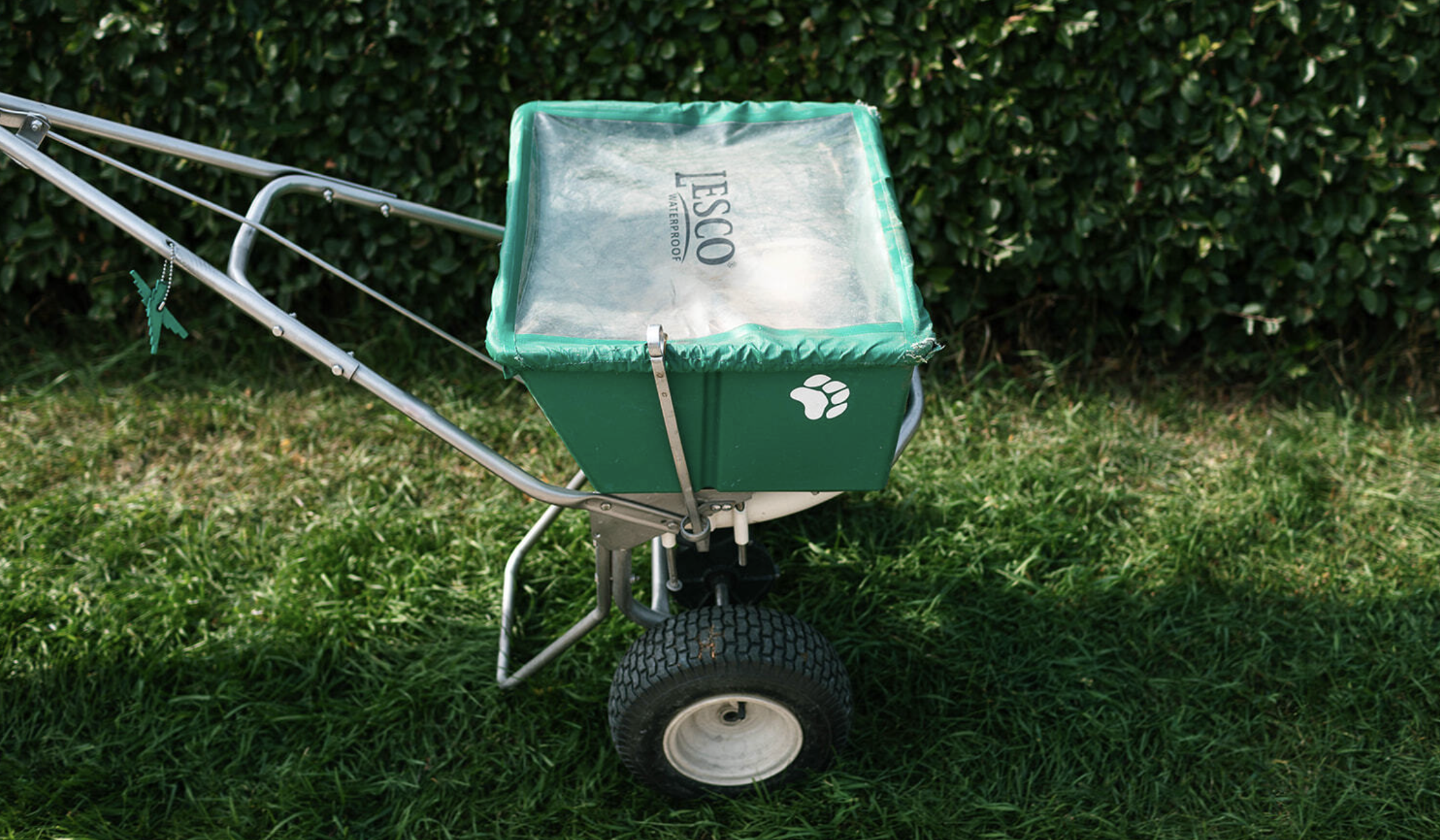Establishing a healthy lawn starts with proper watering. Watering new grass seed correctly ensures it gets the right amount of moisture to germinate and grow strong.
In this guide, we’ll explain how often to water new grass seed, how much water to use, and key tips to help your lawn thrive from the start.

Why Watering Matters for New Grass Seed
Water is essential for seed germination and early growth. Grass seeds can dry out without consistent moisture and fail to sprout, leading to thin or patchy lawns.
Proper grass seed watering helps soften the seed coating, activate enzymes, and encourage roots to develop deep into the soil. The right moisture balance ensures stronger, healthier grass that stands up better to weather, foot traffic, and weeds.
How Often to Water New Grass Seed
New grass seed needs frequent, light watering to stay consistently moist during germination. For most lawns, this means watering two to three times per day during the first couple of weeks.
As the grass begins to sprout, you can gradually reduce the frequency. Shift to once daily, then eventually to two to three times per week as the roots grow deeper and the grass becomes established.
The key is to keep the top inch of soil damp, not soggy, until the new grass seed watering schedule can be reduced once the grass is strong enough to handle longer dry periods.
How Much Water Does New Grass Need
When watering new grass seed, the goal is to keep the top inch of soil consistently moist — not soaked. Each watering session should apply just enough to moisten the soil without causing puddles or runoff.
In the early stages, this usually means about one-quarter inch of water per session, two to three times a day. As the grass grows, you can gradually increase the watering depth while reducing frequency to encourage deeper root development.
Over time, once the lawn is established, aim for about one inch of water per week, including rainfall.
Best Time to Water Grass Seed
The best times to water new grass seed are early morning and late afternoon. These times help reduce evaporation and allow moisture to soak into the soil before the heat of the day or overnight cooling.
Morning watering is ideal because it gives the grass plenty of time to dry before evening, which helps prevent disease. If you water in the late afternoon, make sure there’s still enough daylight left for the grass blades to dry out.
Avoid watering during the hottest part of the day or late at night to minimize water loss and reduce the risk of fungal growth.
How Long to Water New Grass Seed?
Aim for short, gentle sessions that keep the top inch of soil evenly moist. In most cases, watering for 5 to 10 minutes per area, two to three times per day, is enough during germination. As the seedlings grow stronger, extend the watering time and reduce frequency to promote deeper root growth.
Common Mistakes to Avoid
Grass seed watering might seem simple, but a few common missteps can slow down growth or damage your lawn before it can thrive. Avoiding these mistakes can make all the difference in getting the lush, green results you want.
Watering Too Much
Overwatering can lead to soggy soil, which suffocates seeds and encourages mold or disease. Keep the soil moist, not soaked.
Watering Too Little
Letting the soil dry out between waterings can stop seeds from germinating. The new seed needs constant moisture to start growing.
Inconsistent Schedule
Skipping days or changing your new grass seed watering pattern too often confuses the growth process. Stick to a regular schedule, especially during the first few weeks.
Watering at the Wrong Time
Watering in the day's heat leads to evaporation, while late-night watering promotes fungus. Early morning is the safest bet.
Not Adjusting as Grass Grows
Failing to reduce frequency and increase depth as the grass matures can result in shallow roots. Change your watering strategy as the lawn develops.
Can You Overwater Grass Seed?
Yes. Overwatering grass seed can be just as harmful as underwatering. When the soil stays constantly soaked, it can suffocate the seeds, cause rot, or lead to fungal growth. To prevent this, water lightly and often rather than flooding the soil. The surface should feel damp to the touch but never muddy or slippery.
Tips for Keeping Soil Moist Without Overwatering
Finding the balance between keeping the soil moist and avoiding overwatering is key to healthy seed growth. The goal is to maintain steady moisture without drowning the seeds or compacting the soil. Here are four practical tips to help you do just that.
Use a Light Spray Nozzle
A gentle spray ensures even coverage without washing away seeds.
- Mist the surface lightly to avoid puddles or runoff
- Adjust the pressure to a fine spray instead of a strong stream
- Water slowly to let moisture soak into the topsoil.
Mulch with Straw or Peat Moss
Covering your seeds helps retain moisture and protects them from drying out.
- Spread a thin, even layer over seeded areas
- Use clean, weed-free straw or peat moss
- Avoid piling too much, which can block sunlight.
Monitor Soil with Your Finger
A simple touch test can help you gauge moisture levels.
- Press your finger about an inch into the soil
- If it feels dry, it’s time to water
- If it feels muddy, hold off and let it dry slightly.
Water More Often, in Smaller Amounts
Frequent light watering is better than deep soaking for new seeds.
- Aim for 2 to 3 short watering sessions per day
- Only moisten the top inch of soil each time
- Adjust based on sun exposure and weather conditions.
Let Yard Dawgs Handle Your Lawn
Watering new grass seed correctly is crucial for a thick, healthy lawn, but it can be difficult to manage. At Yard Dawgs, we take the guesswork out of lawn care. Our team knows exactly how to keep your new grass growing strong, so you don’t have to worry about timing, technique, or results. Let us handle it and enjoy a greener, stress-free yard.





.png)
